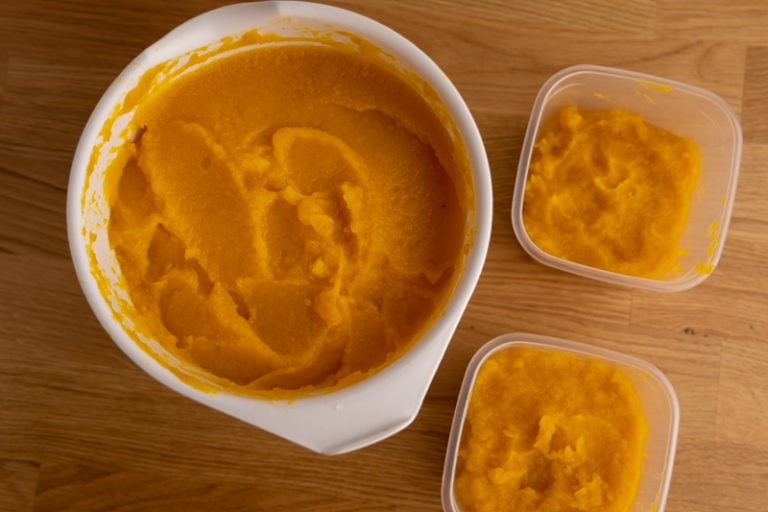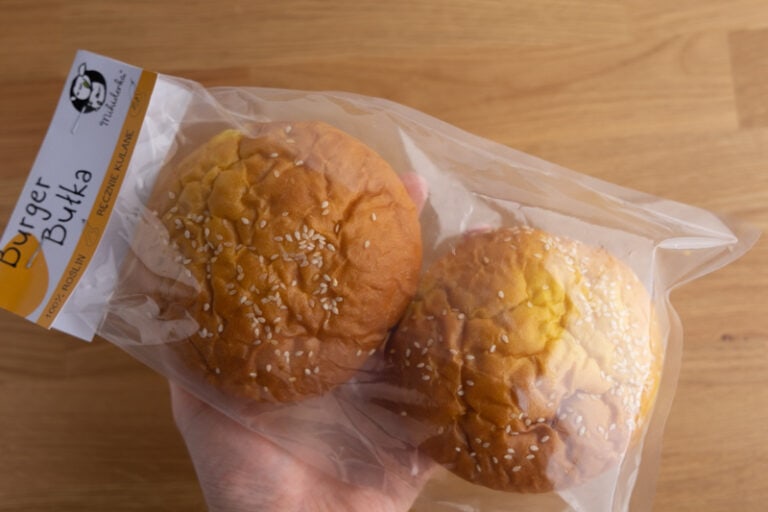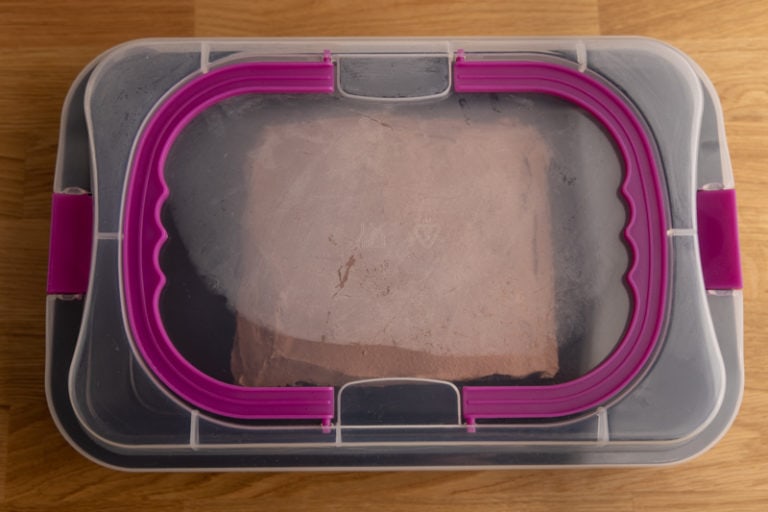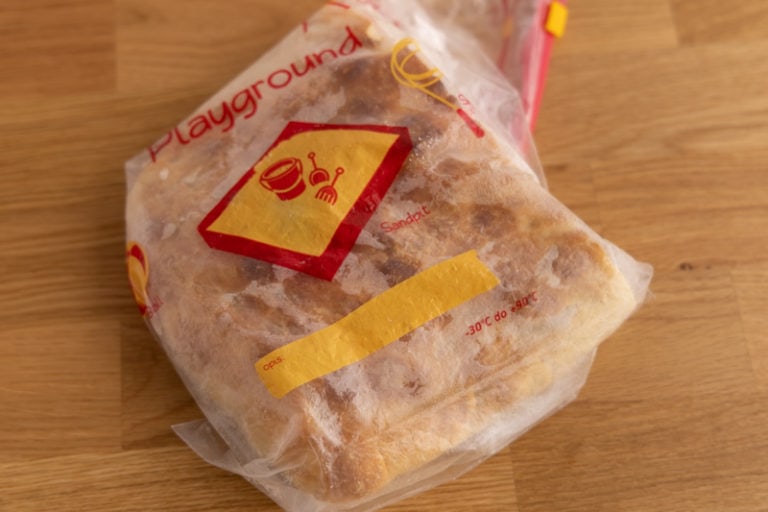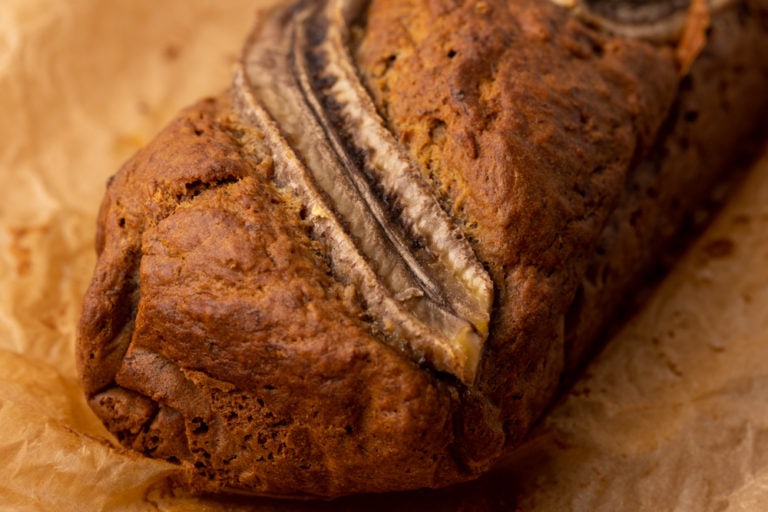How Long Does Cornbread Last and Do You Refrigerate It?
Here’s all you need to know about the shelf life and storage of cornbread. Learn how long cornbread lasts, whether you should refrigerate it, and when to toss it.
So you’ve finished dinner, and there’s still half a pan of warm, freshly baked cornbread. You want to store it for later, but you’re not sure if you need to refrigerate it or not.
Or you’re thinking about doubling your recipe but unsure how long cornbread lasts in storage.
Sounds familiar?
If so, this article is for you. Let’s dive in.
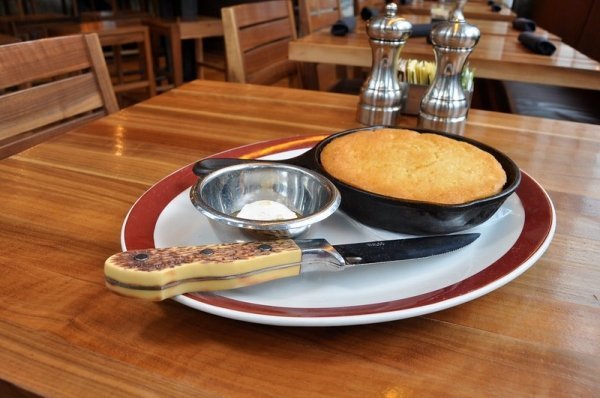
Does Cornbread Need to Be Refrigerated?
Plain cornbread doesn’t need refrigeration and can last for at least a few days on the counter if wrapped tightly. Or you can store it in the fridge to extend that to a week. But if you add veggies or top it with cheese, you need to refrigerate it.
(That means you can leave cornbread out overnight with no problem, at least in most cases.)
As you can tell, there’s no one-size-fits-all answer here. But it’s usually quite clear whether your cornbread recipe is a traditional one (like this one) or a more fancy one with chopped veggies stirred into the batter or topped with parmesan or mozzarella.
In other words, if your cornbread starts to remind you of a drier and corn-flavored version of a frittata, it definitely belongs to the fridge.
(It’s similar to storing bread vs. storing zucchini bread. You can leave bread on the counter, but zucchini bread typically needs refrigeration.)
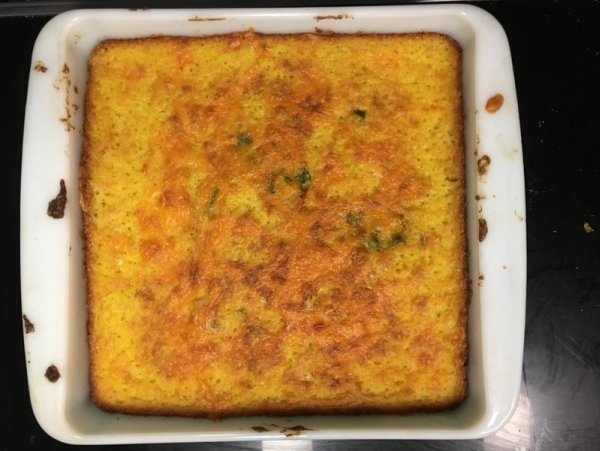
How To Store Cornbread
Let your cornbread cool on the counter, then wrap or seal it, so it doesn’t dry out. Covering with plastic is a great option, but you can also use resealable freezer bags or airtight containers.
Once wrapped, you can leave it at room temperature or refrigerate it, depending on whether it’s plain cornbread or not and how long you need to have it around.
The longer that period is, the more it makes sense to refrigerate it. And if you decide to put your cornbread in the fridge, a tight seal is a must. Otherwise, it’ll dry out and possibly pick up some nearby smells.
When it comes to wrapping options, a tight wrap you get with plastic is ideal, as it helps the baked good retain quality for the longest. But if possible, I suggest going with something reusable and more environment-friendly, like bags or containers.
Finally, if you have more than you need for the next couple of days, it’s best to freeze it immediately. Freezing stale cornbread won’t freshen it, so you want to freeze it fresh.
Let’s talk about the process.
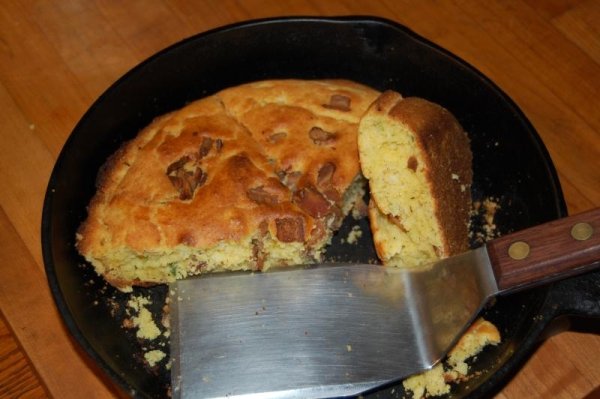
How To Freeze Cornbread
If your family isn’t big on cornbread, or you’d like to bake more in advance, freezing is the way to go. And the whole process is pretty much the same as for bread. Here’s how to do it:
- Portion. If you have more leftovers than you need for a single meal, it might be a good idea to portion them. Smaller portions are also easier to fit in the freezer. If you’ve baked two or more baking dishes or cast iron pans of cornbread, definitely cut all of that goodness into portions.
- Wrap each portion. Go with either aluminum foil or freezer bags. If using the latter, squeeze out the air before sealing. If you expect the cornbread to sit in the freezer for a long time, double wrap it for extra protection from freezer burn.
- (optional) Put the portions in airtight containers. If you want to make sure the cornbread retains its shape and form, put it in a container. This way, you can put other food products onto it without deforming the baked good.
- Chuck everything in the freezer.
Cornbread will retain quality for at least a couple of months in the freezer.
When it comes to defrosting, transfer a portion into the fridge and leave it there overnight. In the morning, it should be perfectly fine for reheating.
To save time, you can put frozen cornbread into the oven and thaw it there. Once thawed, it’s ready for reheating. Please note that rapid thawing generally yields worse results than slow defrosting in the fridge, so choose the latter whenever you can.
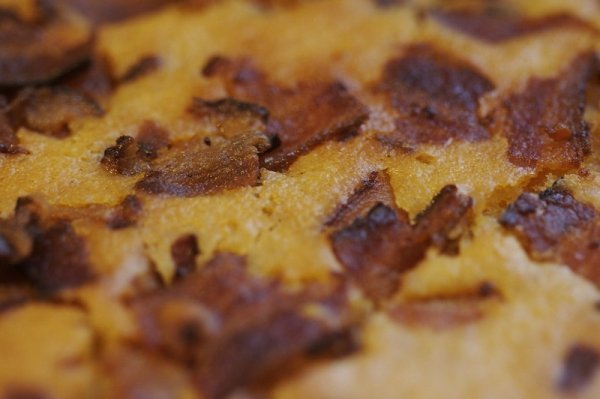
How Long Does Cornbread Last?
| Counter | Fridge | |
|---|---|---|
| Traditional cornbread | 3 – 5 days | 7 days |
| Cornbread with veggies, cheese, etc. | 3 – 4 days |
Freshly baked traditional cornbread keeps best quality for 3 to 5 days at room temperature or up to a week in the fridge. On the other hand, cornbread with extras like veggies, fruits, or cheese, keeps for about 4 to 5 days in the fridge.
In both cases, you can freeze your leftover cornbread to extend its storage period further.
Okay, so there’s no widely agreed-upon storage time for cornbread. Some recipes tell you that you should eat it within 2 to 3 days tops, while others say up to a week is okay. And they’re both right, to an extent.
Cornbread tastes best fresh, so the 2 to 3 days suggestion makes sense if you want the best possible quality. But if you wrap your cornbread well and refrigerate, it should still be pretty decent after those 5 to even 7 days.
(Similarly, tortillas last longer when refrigerated.)
Of course, longer storage times have their downsides. Besides the possibility of your cornbread getting stale, there’s also a chance that it’ll simply grow mold. And that’s game over, as you know.
So if you’re storing your cornmeal-based bread for longer than a couple of days, give it a thorough check before eating.
When it comes to cornbread with extras, I suggest following the general recommendation for storing perishable leftovers, which is to refrigerate them for 3 to 4 days. I don’t see cornbread with veggies being much different from, say, a quiche, so the storage times should be the same.
Having covered that, let’s talk about spoilage signs.
How To Tell If Cornbread Is Bad?
Checking whether your cornbread is spoiled or not is not that difficult. Look for the following:
- Mold. If it started to grow mold, it’s definitely spoiled. Same thing with any other discolorations. If it looks off, discard it.
- Sour smell. If a sweetish baked good smells sour, that’s a pretty sure sign things went south.
- Change of texture. If your cornbread started out perfectly fluffy, and now feels soggy or moist, get rid of it. Even if it’s not technically spoiled, it won’t taste any good.
Stale corn bread, just like stale bread, is fine for consumption. Its only flaw is that it doesn’t taste good. It’s up to you if you tough it out or cut your losses and discard it.
One thing is for sure: stale cornbread won’t get any better. Next time you see it, it’ll probably be moldy. Decide on what to do with it now.
Rotten Records: Share Your Snap!
Caught some food past its prime? Upload your photo to “Rotten Records” and help others spot the signs of spoilage. Every image makes our food community safer and more informed!
